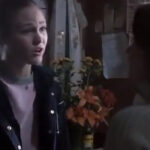My initiation into the enigmatic world of Ghost began unexpectedly, during a late-night car ride. As a friend took the wheel, the haunting melody of Mary on a Cross filled the car, and from that moment, I was captivated.
The song possessed a classic rock vibe, reminiscent of iconic bands like The Cars and Queen, yet it defied my initial expectations. Judging by Ghost’s spectral aesthetic, I had preconceived notions of them as a strictly heavy metal act. However, that night unveiled a band that transcended genre limitations. It became clear: Ghost was capable of sonic versatility, unbound by convention.
Indeed, Ghost often faces criticism from metal purists for not adhering to rigid genre boundaries. I find myself in agreement with this sentiment – Ghost is an entity unto itself, operating beyond the confines of metal categorization. As Tobias Forge, the creative force behind Ghost, aptly stated, “With Ghost you can do pretty much anything. I’m a little rock opera with my music.”
My newfound fascination spiraled into an immersive exploration of Ghost’s discography. My friend became the recipient of enthusiastic, almost daily texts, each proclaiming the genius of yet another Ghost track. Every song unearthed felt like a revelation.
However, amidst this fervent discovery, Dance Macabre, despite its popularity, initially eluded my full appreciation. Early listens left me underwhelmed. It seemed like a pleasant but unremarkable track, lacking the distinctive edge I had come to expect. On the surface, it resembled a straightforward, perhaps even cliché, farewell love song, with seemingly simple lyrics like, “Just wanna be… Wanna be with you in the moonlight.”
Yet, beneath this veneer of simplicity lay layers of thematic depth, waiting to be uncovered. Dance Macabre is far more than a simple love song; its brilliance lies in its masterful manipulation of listener expectations.
Unveiling the Black Death Narrative in Dance Macabre
The casual listener might easily overlook the somber undercurrent that flows beneath the infectious rhythm of Dance Macabre. Both the song and its parent album, Prequelle, are deeply intertwined with the historical context of the Black Death, one of history’s most devastating pandemics. This plague ravaged Europe and North Africa, claiming an estimated 75 million lives.
In the face of omnipresent mortality, societal responses diverged. While some sought solace in religious faith, others embraced hedonism, choosing to spend what they believed to be their final days in revelry. Tobias Forge elucidates this historical backdrop, stating, “Europe was in this turmoil in the late 1340s. The plague is extremely fast. It starts off as the worst flu you’ve ever had and then it just goes worse and then you’re dead after three days. So people were lying in the streets — corpses and all the surroundings were just falling apart. All the brothels and pubs were thriving because people started partying literally like there was no tomorrow because they were gonna die. They were just going for it.”
With a touch of dark humor, Forge encapsulates the song’s essence: “Dance Macabre is capturing that joyous nocturnal sort of life in a disco song.” This juxtaposition of a celebratory disco sound with the macabre theme of the Black Death is a key element of the song’s ingenious construction.
Lyrical Subtlety: Bewitchment in the Moonlight
Adding another layer of intrigue, the seemingly simple chorus lyric, often misheard as “Just wanna be with you in the moonlight,” actually reveals itself to be “Just wanna bewitch you in the moonlight.” This deliberate word choice elevates the song beyond a generic love ballad.
“Bewitch” carries connotations of enchantment and captivation, suggesting a desire to mesmerize or enchant a lover in their final moments. Furthermore, this darker vocabulary aligns seamlessly with Ghost’s signature horror-inspired imagery, adding a thematic consistency that enhances the band’s artistic identity.
This subtle lyrical sophistication, concealed within apparent simplicity, is a hallmark of Ghost’s artistry. The band consistently masterfully subverts expectations, challenging listeners’ presumptions and rewarding deeper engagement with their music. This experience of having one’s expectations overturned is, in my view, central to the appeal and brilliance of Ghost.
Disco’s Disguise: The Genre’s Unexpected Depth
The disco influence in Dance Macabre is itself a stroke of genius. Disco, often dismissed as a frivolous and dated genre, is frequently underestimated. Beyond the glitz and glamour of satin suits and elaborate hairstyles lies a musical form that demands a keen understanding of rhythm, hooks, and groove. Disco’s primary function is to move bodies, to compel listeners to dance.
The most accomplished disco artists have transcended mere danceability, embedding social commentary within their infectious beats. The Bee Gees’ Stayin’ Alive, for instance, subtly addresses the struggles of survival in New York City.
In Dance Macabre, Ghost achieves a similar feat. The band utilizes the upbeat, celebratory framework of disco to explore a profoundly weighty theme – life and revelry in the shadow of the Black Death.
It is in these meticulously crafted details that the true artistry of Ghost’s songwriting becomes apparent. The more I delved into Dance Macabre, the more layers of meaning and musical ingenuity I discovered.
And, predictably, my deepened appreciation for Dance Macabre culminated in another text message to my patient friend, further extolling the virtues of Ghost.


